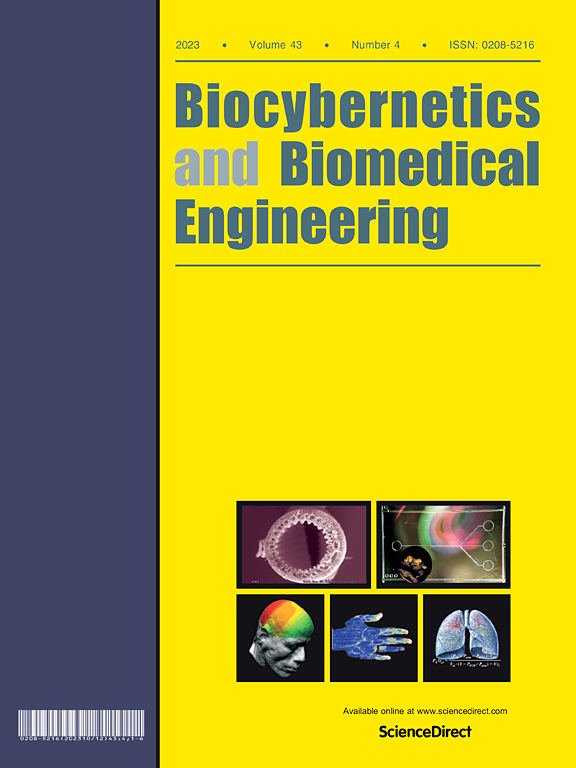通过完全三维适应分割任何模型的体积医学图像分割
IF 6.6
2区 医学
Q1 ENGINEERING, BIOMEDICAL
引用次数: 0
摘要
基于交互式学习机制的任意分割模型(SAM)在不同领域表现出卓越的泛化能力。然而,将SAM应用于非分布域,特别是在三维医学图像分割中,面临着挑战。现有的将二维分割模型用于三维医疗数据的方法将三维体仅仅视为二维切片的堆栈。重要的切片间信息,这是关键的忠实的三维医学图像分割任务,不幸的是被忽略了。在这项工作中,我们提出了3D医疗SAM适配器(3DMedSAM),这是一种跨维度适应的先驱,利用SAM的预训练知识,同时适应3D医疗数据的独特特征。首先,为了弥补从2D到3D的尺寸差距,我们设计了一个新的模块来取代SAM的补丁嵌入,确保无缝过渡到3D图像处理和识别。此外,我们在保持大部分预训练参数冻结的同时,加入了一个3D适配器,以丰富的3D空间信息丰富深度特征,实现了高效的微调。鉴于医学图像中存在不同尺度的异常,我们还设计了一个多尺度的3D掩模解码器,以提高网络对医学图像分割的熟练程度。通过各种实验,我们证明了3DMedSAM在单目标分割和多器官分割任务上实现准确和鲁棒的3D分割的有效性,超越了现有方法的局限性。本文章由计算机程序翻译,如有差异,请以英文原文为准。
Volumetric medical image segmentation via fully 3D adaptation of Segment Anything Model
The Segment Anything Model (SAM) exhibits exceptional generalization capabilities in diverse domains, owing to its interactive learning mechanism designed for precise image segmentation. However, applying SAM to out-of-distribution domains, especially in 3D medical image segmentation, poses challenges. Existing methods for adapting 2D segmentation models to 3D medical data treat 3D volumes as a mere stack of 2D slices. The essential inter-slice information, which is pivotal to faithful 3D medical image segmentation tasks, is unfortunately neglected. In this work, we present the 3D Medical SAM-Adapter (3DMedSAM), a pioneer cross-dimensional adaptation, leveraging SAM’s pre-trained knowledge while accommodating the unique characteristics of 3D medical data. Firstly, to bridge the dimensional gap from 2D to 3D, we design a novel module to replace SAM’s patch embedding, ensuring a seamless transition into 3D image processing and recognition. Besides, we incorporate a 3D Adapter while maintaining the majority of pre-training parameters frozen, enriching deep features with abundant 3D spatial information and achieving efficient fine-tuning. Given the diverse scales of anomalies present in medical images, we also devised a multi-scale 3D mask decoder to elevate the network’s proficiency in medical image segmentation. Through various experiments, we showcase the effectiveness of 3DMedSAM in achieving accurate and robust 3D segmentation on both single-target segmentation and multi-organ segmentation tasks, surpassing the limitations of current methods.
求助全文
通过发布文献求助,成功后即可免费获取论文全文。
去求助
来源期刊

Biocybernetics and Biomedical Engineering
ENGINEERING, BIOMEDICAL-
CiteScore
16.50
自引率
6.20%
发文量
77
审稿时长
38 days
期刊介绍:
Biocybernetics and Biomedical Engineering is a quarterly journal, founded in 1981, devoted to publishing the results of original, innovative and creative research investigations in the field of Biocybernetics and biomedical engineering, which bridges mathematical, physical, chemical and engineering methods and technology to analyse physiological processes in living organisms as well as to develop methods, devices and systems used in biology and medicine, mainly in medical diagnosis, monitoring systems and therapy. The Journal''s mission is to advance scientific discovery into new or improved standards of care, and promotion a wide-ranging exchange between science and its application to humans.
 求助内容:
求助内容: 应助结果提醒方式:
应助结果提醒方式:


